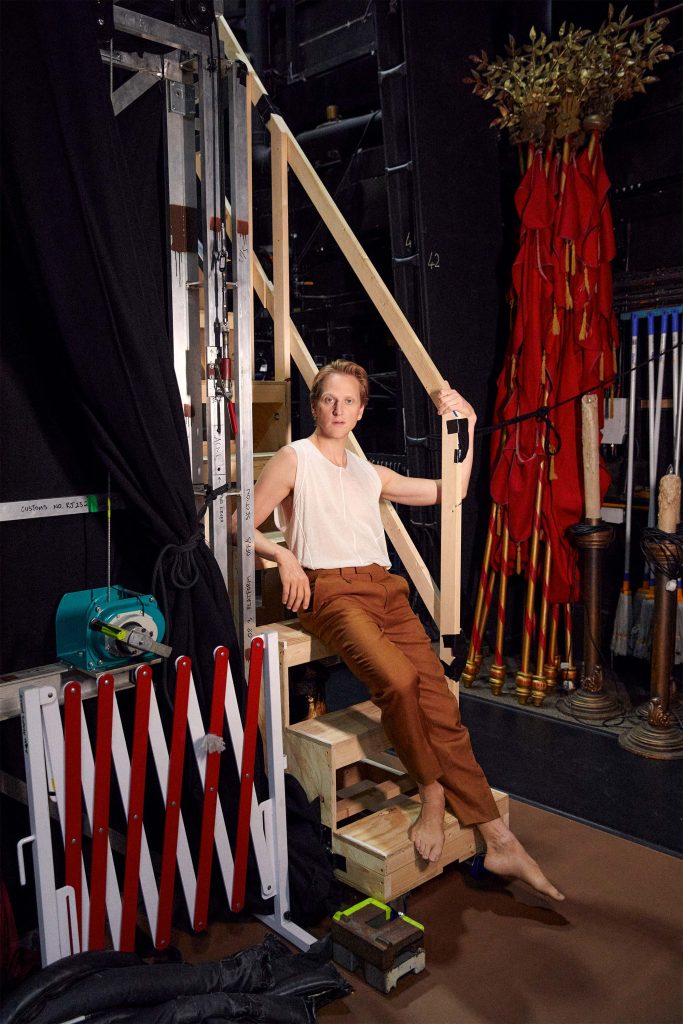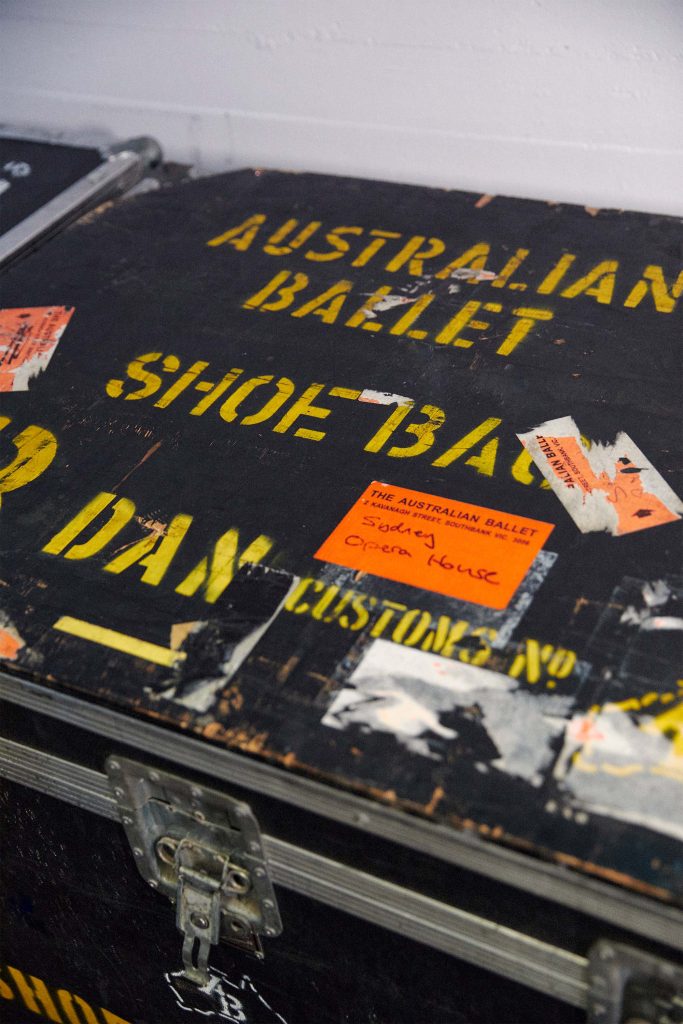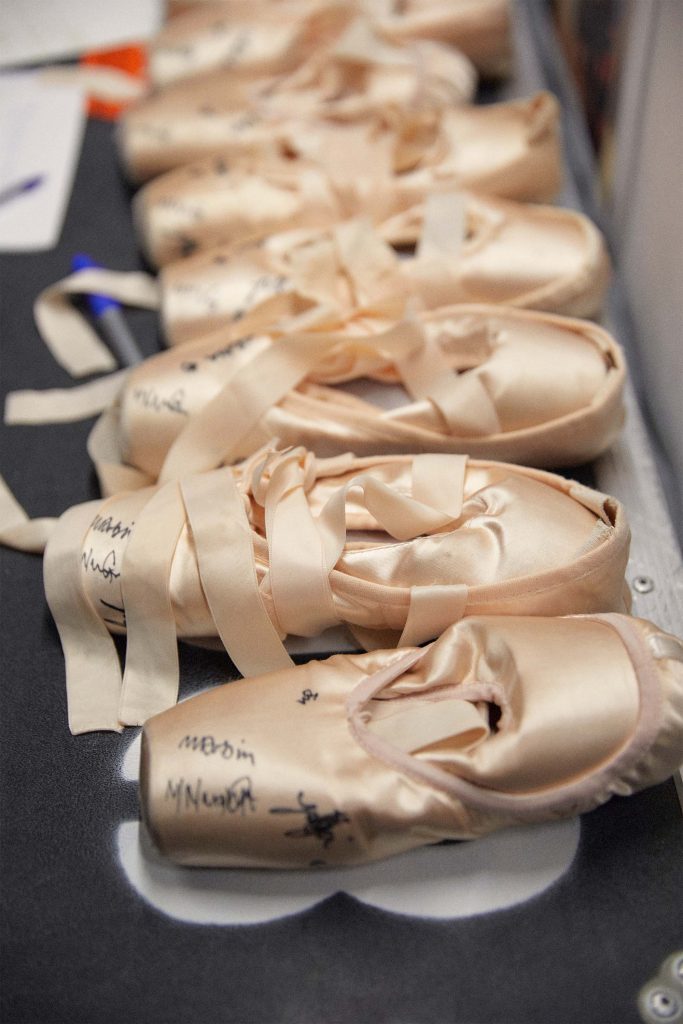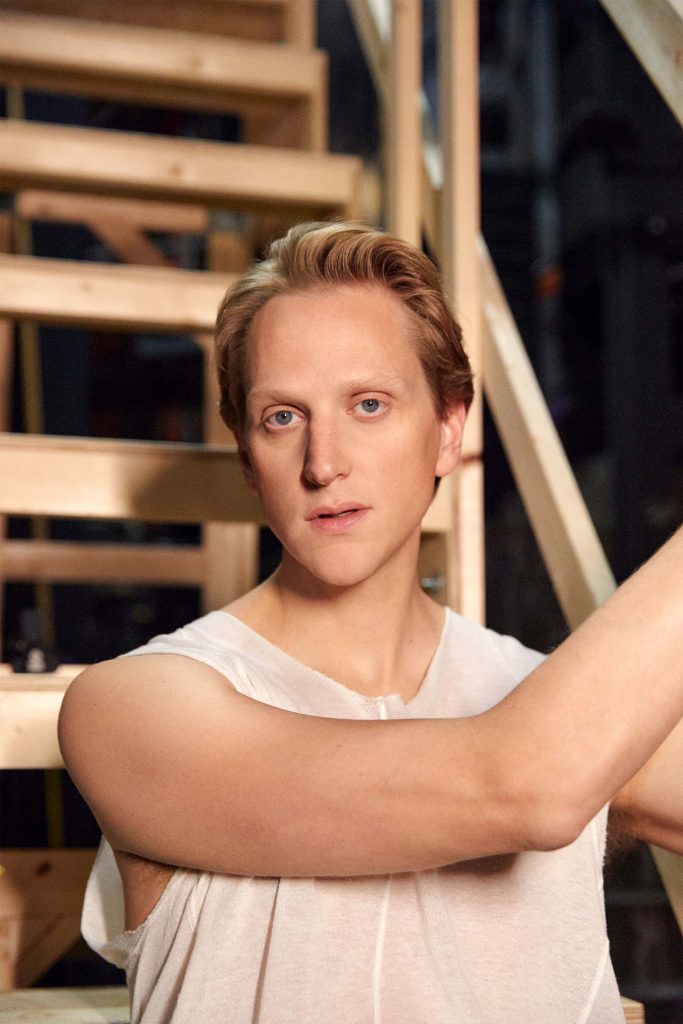FORMERLY THE AMERICAN STAR OF THE INTERNATIONAL BALLET WORLD, DAVID HALLBERG MAY HAVE LEFT THE STAGE TO BECOME THE ARTISTIC DIRECTOR OF THE AUSTRALIAN BALLET BUT AS THE INSTITUTION CELEBRATES ITS 60TH YEAR ON STAGE, HE’S READY TO LEAD.
BY JANE ALBERT
There was a time when David Hallberg loved the spotlight. The American star of the international ballet world was for many years in demand from Europe to America, performing with stellar companies including American Ballet Theatre, the Bolshoi Ballet and the Royal Ballet in London.
“When you’re a dancer, it’s all about you. It’s about your performance that night, how your body feels, how you fuel your body—you’re the one in the spotlight,” Hallberg says.
Now all that has changed. But while Hallberg may have retired from his career as a professional dancer, he is instead the one responsible for training the spotlight on an entire company as the eighth artistic director of The Australian Ballet.
Having taken the helm in 2021, it is Hallberg’s vision that audiences will see rolled out across the nation’s stages this year; the 60th anniversary year for the 75-strong company of dancers. And Hallberg couldn’t be happier.
“The year is big, but it’s also a year I know audiences are ready for, and dancers are ready for,” he says.
“My goal is to make The Australian Ballet as relevant as possible to today, relevant to audiences, relevant repertoire, so when the curtain goes up you see a living, breathing artform. And it’s the beauty and history of this artform that I really believe in and want to uphold.”



Whether you lean towards the more traditional, classical end of the spectrum or the edgier contemporary works, there is plenty on the program, from revitalised productions of Swan Lake and Don Quixote to George Balanchine’s fiendishly exacting, globally sought-after work Jewels. There are two world premieres from two of the freshest young choreographic voices working in Australia today: The Australian Ballet resident choreographer Alice Topp and Australian Dance Theatre artistic director Daniel Riley.
It is all part of the Hallberg vision which, after two years in a Covid-interrupted world, he is finally having a chance to unveil; one that honours an artform with deep historical roots while ensuring its continued relevance in our evolving society.
The country’s second-oldest classical ballet company (West Australian Ballet was founded in 1952), The Australian Ballet began in 1962 under the guidance of former dancer and ballet mistress Peggy van Praagh. It featured founding members who would later become some of the nation’s best dancers, Marilyn Jones, Garth Welch and Kathleen Gorham among them.
Hallberg has his own profound history with the company. He quietly relocated to Australia in 2015 to rehabilitate with its world-leading medical team, after suffering career-threatening complications from an ankle injury. Hallberg spent 14 months in Melbourne rehabbing with the company’s internationally respected physiotherapist Dr Sue Mayes, who ultimately helped save his career.
In return, Hallberg became the company’s first resident guest artist in 2017 and committed to return to Australia to perform with them annually, gaining a great understanding of and friendship with The Australian Ballet in the process.
Replacing former company dancer-turned-artistic director David McAllister, who stepped down in 2020 after two decades, Hallberg says he was brought in to capitalise on his international experience and contacts and to “sharpen things up”. “That doesn’t mean I’m going to completely dump everything and start all over again [but] be conscious of the balance,” the 40-year- old says.
“Some people may think ‘Swan Lake again?’ and want a new creation, whereas others come to the ballet because they know they’re going to get a beautiful production of Swan Lake. It’s really important to balance the two and not veer too far in one direction.”
Working with a new executive team—British conductor and music director Jonathan Lo succeeds Nicolette Fraillon and former Bangarra Dance Theatre executive director Lissa Twomey has taken over from Libby Christie—Hallberg is excited to unveil his vision for the company’s diamond anniversary. “It’s meant to invigorate, it’s meant to challenge, but it’s also meant to bring enjoyment,” he says.
Determined to highlight The Australian Ballet’s strength in the classical “ballet” of its title, Hallberg hopes to honour the company’s rich history by reviving two of its signature works, Swan Lake and Rudolf Nureyev’s Don Quixote. Hallberg firmly believes every ballet company needs its own production of Swan Lake, and while The Australian Ballet enjoyed huge success with Graeme Murphy’s 2002 contemporary take on the 1877 work, Hallberg sought out a more traditional production.
“It’s the most famous ballet ever created and one that is still so valid in the classical repertoire,” he notes. He was delighted to discover in the archives the company’s own 1977 production, choreographed by Anne Woolliams and performed for 25 years, and will direct an updated production of Woolliams’ show featuring all new sets and costumes.
“Another thing that’s really important to me is that the repertoire doesn’t look like a museum piece, that we don’t date ourselves by just turning on the stage lights and bringing in a production that looks like a museum,” he says. The sizeable cost of the exquisite new design has been met through the generosity of no less than 800 donors following a targeted fundraising campaign.
It is in his determination to ensure classic works carry a fresh appeal that Hallberg is also reviving
Don Quixote, a ballet developed for the stage but immortalised on screen in 1972 with The Australian Ballet by iconic dancer Rudolf Nureyev and director Sir Robert Helpmann.
Filmed in a hangar at Essendon Airport, it became an international hit for the company. Hallberg will restage the original choreography but incorporate updated scenic design of the film’s set, including an on-stage screen.
“Rudolf Nureyev was one of the greatest dancers ever and created this film with the company that was so textured and full and busy and made audiences feel like they were in a plaza in Seville,” says Hallberg. “We’re replicating what was done and again, it’s [my duty] to ensure these productions aren’t museum pieces so when the curtain goes up we feel like we’re in Spain. That’s what makes the artform come alive.”
Read the full story in the fifth print edition of The Luxury Report, released March 2023.

PHOTOGRAPHY BY BEC PARSONS
STYLING BY JANA BARTOLO
